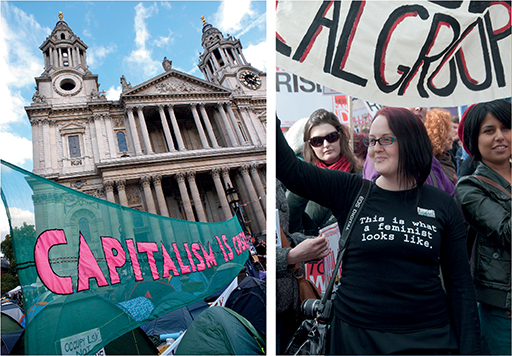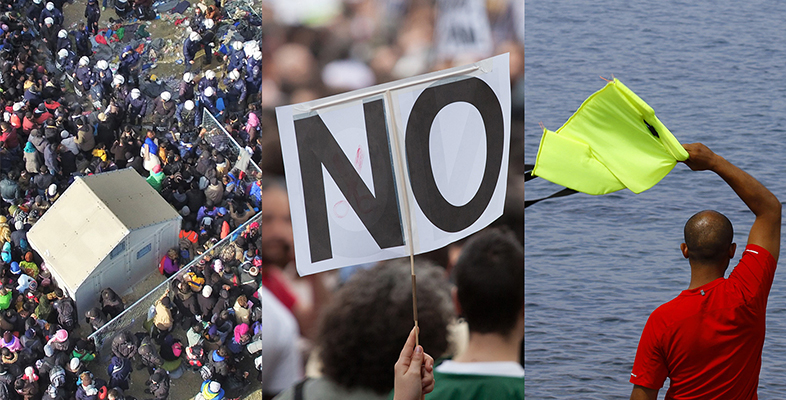3.2 Social identities and the dynamics of crowds
People are increasingly using mass protest as a method of demanding political changes. Indeed, there has been a surge in protest events across the globe (see the GDELT Project [Tip: hold Ctrl and click a link to open it in a new tab. (Hide tip)] , which maps protests happening around the world). From a social psychological perspective, these events raise a number of important research questions. For example, what governs what happens at such events, and why do some events remain peaceful and others turn conflictual? Social psychologists have found that it is groups and not individuals who are the main engine of social conflict and social change (Reicher, Haslam, Spears and Reynolds, 2012).
One of the earliest studies in this area was a field study of the St Pauls riots in Bristol, England, on 2 April 1980 (Reicher, 1984). These riots started when the police raided the Black and White Café in the St Pauls area of Bristol, against a background of increasing racial tension in major British cities in the 1980s (Reicher, 2001). Reicher’s systematic analysis of this event highlighted the ways in which participants described themselves in terms of shared social identities, as members of the St Pauls community. To be from St Pauls for some people meant being oppressed by institutions such as the police, being exploited by financial institutions and living in poverty within an affluent society. Accordingly, the police, financial institutions and symbols of luxury were the targets of attacks during the conflict. The behaviour of the protesters could therefore be understood in relation to their membership to specific groups (Stott, Drury, and Reicher, 2016).

Subsequent studies have led to the development of a general model of crowd behaviour: the Elaborated Social Identity Model (ESIM) (Drury and Reicher, 1999; Reicher, 2001; Stott and Drury, 1999; Stott and Reicher, 1998). The ESIM starts from the position that crowd events are typically intergroup encounters, and examines how the identity of a group may develop and change as a result of interactions between groups. For example, a crowd of protesters can become united and develop a shared ‘anti-police’ identity, when the police use coercive force that is perceived by protesters as illegitimate and wrong (Reicher, 1996; Reicher and Haslam, 2011; Stott and Reicher, 1998; Stott and Drury, 2000). According to this perspective, the interaction between protesters and the police can explain what turns a crowd from peaceful to conflictual.
